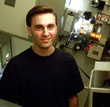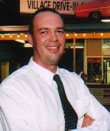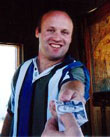|
|
 
|
|
Author
|
Topic: Measuring screen luminance (without destroying the lens)
|
Michael Barry
Jedi Master Film Handler

Posts: 584
From: Sydney, NSW, Australia
Registered: Nov 1999
|
 posted 11-21-2000 09:28 AM
posted 11-21-2000 09:28 AM




It seems to be widely accepted that projecting raw light from a xenon lamphouse straight through a lens without any film in the gate can damage a lens. At the same time, SMPTE specifies measuring screen luminance using this 'open gate' method. Is there a way to do this safely without jeopardising projection lenses in any way?
| IP: Logged
|
|
|
|
|
|
|
|
|
|
John Walsh
Film God

Posts: 2490
From: Connecticut, USA, Earth, Milky Way
Registered: Oct 1999
|
 posted 11-21-2000 08:31 PM
posted 11-21-2000 08:31 PM




In every industry, there are always people who will not follow proper procedures, and get away with it.I suspect the reason many theaters get away with projecting white light is the lamp is not bright enough- so the picture is dark, too. "Burning" the lens is the thing I've heard will happen if the light is left on too long. I'm not exactly sure what that means; I guess it means the bluing will discolor. I've never seen it happen. What I have seen is that the back element lens (closest to the film) crack. I've only seen two lenses that this happend to; both had a vertical crack about in the center of the rear element. We actually ran like that for a week with one of them. Since the crack was at a right angle to the light, there was very little distortion visible on screen.
| IP: Logged
|
|
|
|
|
|
|
|
|
|
David Kilderry
Master Film Handler

Posts: 355
From: Melbourne Australia
Registered: Sep 1999
|
 posted 11-24-2000 04:30 AM
posted 11-24-2000 04:30 AM





Michael,The projectors are Kinoton FP50 (our spec) the lamphouse uses the usual Kinoton glass heat filter with a water cooled gate. The water circulates through a water bin via a submersible pump. Head above gate is coll at all times. We run 5K in Kinoton FP50 machines without water cooling and have no problems. Most other brands can not handle the heat with these lamps. Screen width is 17 meters light is between 18 and 22 footlamberts. Lenses are brang new Schneider. As a matter of interest the smallest lamps in the complex are 4K! The complex is located in Glenorchy Tasmania and opened a few weeks ago. It will be joined in 3 weeks by another complex at Eastlands in Tasmania also with 7K on the big screen. You would be shocked at how low the light is on most big screens run by the other two majors in this country. Many of the big screens at one chain that are branded with a catchy title have less than 10 footlamberts! David
| IP: Logged
|
|
John Pytlak
Film God

Posts: 9987
From: Rochester, NY 14650-1922
Registered: Jan 2000
|
 posted 11-27-2000 07:05 AM
posted 11-27-2000 07:05 AM





When running "open gate", there is no film in the gate to absorb some of the energy. Even film that has a very light image (e.g., white sky or snow scene) transmits only 50 percent of the energy, and typical scenes only let about 10 percent of the energy go through the lens. So, when running "open gate" to measure screen luminance, there is a risk of damage to the lens, especially with lamps larger than 2000 watts. Old lenses with cemented elements are the most likely to be damaged by excessive heat, but even modern lenses could be damaged with very large lamps. Gordon's suggestion of 30 seconds of light, and at least 60 seconds to cool between exposures is a good one. ------------------
John P. Pytlak, Senior Technical Specialist
Worldwide Technical Services, Entertainment Imaging
Eastman Kodak Company
Research Labs, Building 69, Room 7419
Rochester, New York, 14650-1922 USA
Tel: 716-477-5325 Fax: 716-722-7243
E-Mail: john.pytlak@kodak.com
| IP: Logged
|
|
|
|
|
|
All times are Central (GMT -6:00)
|
|
Powered by Infopop Corporation
UBB.classicTM
6.3.1.2
The Film-Tech Forums are designed for various members related to the cinema industry to express their opinions, viewpoints and testimonials on various products, services and events based upon speculation, personal knowledge and factual information through use, therefore all views represented here allow no liability upon the publishers of this web site and the owners of said views assume no liability for any ill will resulting from these postings. The posts made here are for educational as well as entertainment purposes and as such anyone viewing this portion of the website must accept these views as statements of the author of that opinion
and agrees to release the authors from any and all liability.
|

 Home
Home
 Products
Products
 Store
Store
 Forum
Forum
 Warehouse
Warehouse
 Contact Us
Contact Us




 Printer-friendly view of this topic
Printer-friendly view of this topic

















